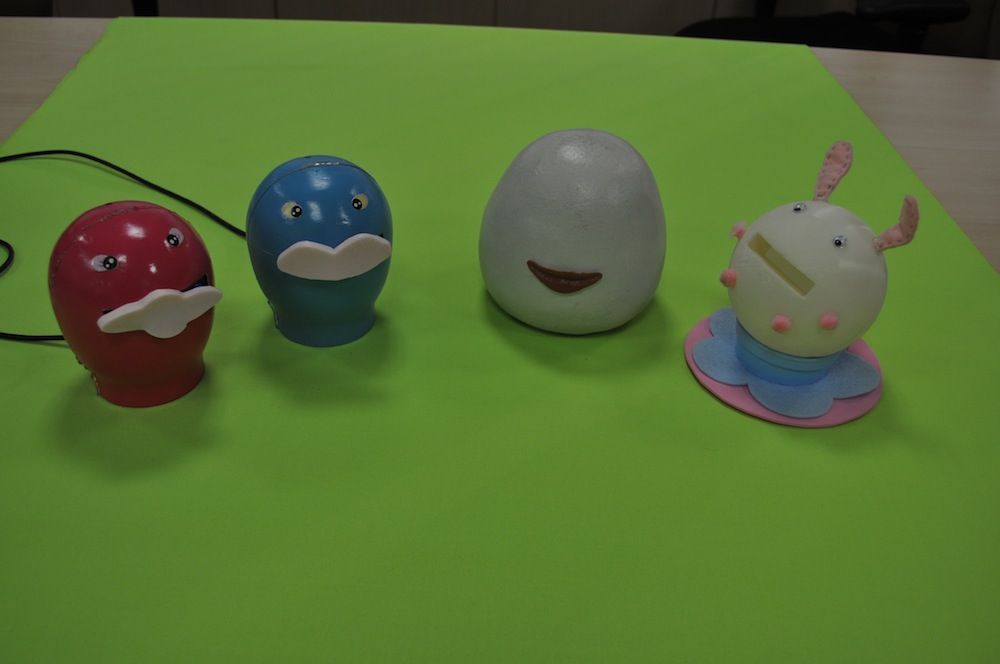Weird Device Helps Long-Distance Lovers 'Teleport' Smooches

Long-distance lovebirds may soon be able to "teleport" kisses to one another, thanks to a high-tech but somewhat unusual device.
The smooching machine — called the "Kissenger," which is short for "Kiss-Messenger" — allows two people to transmit kisses to each other when they are physically apart.
"It is mostly a symbolic romantic device," said Hooman Samani, author of the study and inventor of the Kissenger device. [5 Ways Love Affects the Brain]
So, how does the Kissenger work? Each device is paired with its "twin," and the qualities of a kiss, such as its force, are sensed and transmitted from one device to the other through an interactive interface.
In order to transmit a kiss, a person needs to kiss the device on its "lips." This sensation is then transferred to his or her partner's device, enabling that person to receive the kiss from the sender.
The most recent version of the device features a pair of dark-pink and blue Kissengers, each of which has its own "eyes" and light-pink silicone "lips."
The Kissenger device is already being advertised on kissengers.com, and is available for preorder.
Sign up for the Live Science daily newsletter now
Get the world’s most fascinating discoveries delivered straight to your inbox.
The machine's inventors are aiming to make the device ready for people to purchase in 2015 for $50, Samani, an assistant professor in the Department of Electrical Engineering at National Taipei University in Taiwan,told Live Science.
In a recent study, which Samani called a "scientific justification" of his team's work, the researchers tested the device on 10 couples in long-distance relationships. The couples used the Kissengers for three weeks and provided the investigators with feedback on the machines' functionality.
The feedback that the researchers received from the users was mixed. "When I received the package and opened it, I said to myself: OMG this is so cute!" one user said.
At the end of the testing period, four couples asked the investigators if they could keep the smooching devices and use them in the future.
However, other users noted that it would be embarrassing for them to use the device in public. "I was Skyping with my girlfriend in my office but we didn׳t kiss, I felt it was embarrassing if someone sees me kissing a device," a study participant reported. "I wish it was designed differently so that I could use it in public as well."
One user also complained about the Kissenger lip material being too hard, saying that softer material would make the device "much more expressive."
In their study, the researchers described how the device had evolved from an egg-shaped "head" with dark-red lips to a teddy-bear-like "head" with ears, a nose, eyes and heart-shaped lips to a softball-size version of the device with a pair of silicone lips and bunny-type ears.
The investigators mentioned previous technological inventions with modern approaches to interpersonal communication, such as the LumiTouch system, which consists of two interactive picture frames. With this device, when one partner touches a framed picture of himself or herself, the picture of his or her partner lights up.
The researchers also discussed a number of inventions that have been previously developed to imitate hugs, such as a "thermal hug" belt that simulates the sensation of a hug by warming up a band of heat around a person's lower back.
While the scientists said the Kissenger could "transfer emotions to the loved ones," they also acknowledged that use of the device may trigger certain social, emotional and ethical issues.
"On the legal front, these devices also open a debate related to aspects of adultery in relationships," they wrote in the study. "For example, would usage of the device with another person constitute infidelity by the partner?"
Another potential problem is that couples that use the device for long periods of time may experience a lack of physical affection, the researchers said.
The study outlining the development of the Kissenger device and its subsequent testing was published in the October-November 2014 issue of the International Journal of Human-Computer Studies.
Follow Agata Blaszczak-Boxe on Twitter. Follow Live Science @livescience, Facebook & Google+. Originally published on Live Science.












